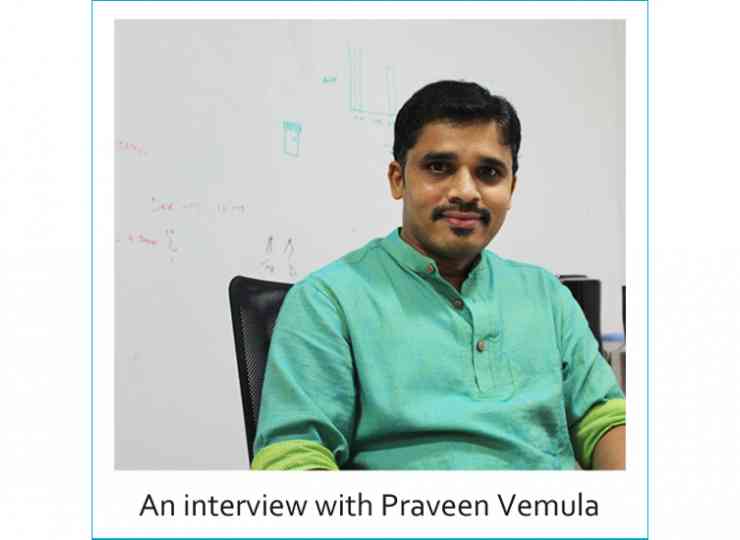G2-arrested stem cells are a subset of dormant stem cells found in developing and fully formed organs such as the brain, muscle, and kidneys that contribute to organ growth and repair. Although these cells have been known to exist since the last century, the molecular mechanisms of how they enter and exit the dormant state are not well understood. Now, a team of researchers from the Institute for Stem Cell Biology and Regenerative Medicine (InStem) in Bengaluru have discovered a molecular pathway that could induce and maintain G2 arrest in stem cells during developmental processes.
By Anusha Krishnan
G2-arrested stem cells are a subset of dormant stem cells found in developing and fully formed organs such as the brain, muscle, and kidneys that contribute to organ growth and repair. Although these cells have been known to exist since the last century, the molecular mechanisms of how they enter and exit the dormant state are not well understood. Now, a team of researchers from the Institute for Stem Cell Biology and Regenerative Medicine (InStem) in Bengaluru have discovered a molecular pathway that could induce and maintain G2 arrest in stem cells during developmental processes.
Much like the magic spindle that put sleeping beauty into a deep slumber, certain molecular mechanisms can induce stem cells to enter and remain in a state of quiescence or dormancy for extended periods of time. When an appropriate signal ‘awakens’ these quiescent stem cells, though, they can reenter the cell cycle and begin to divide.
The cell division cycle, or cell cycle is the fundamental process of cellular reproduction, and is described in a series of four phases. The first gap or G1 phase is a growth phase that cells enter right after a bout of cell division. During G1, cells synthesize many cellular components and grow in size to either prepare for a transformation into specialized cells, or gear up for the next round of division. If the cell is to continue dividing, it moves into the synthesis or S phase, where DNA is replicated. In the second gap or G2 phase, another round of rapid cell growth occurs to prime the cell for the next phase—the mitosis or M phase, during which cell division occurs.
Before cells enter the S phase, they often enter a ‘paused’ state known as G1 arrest to assess their own condition, and gauge the need for further cell division. Similarly, cells may also undergo a G2 arrest before entering the M phase. Until very recently, differences between G1- and G2-arrested stem cells had not been investigated in detail. In a Science paper published by Leo Otsuki and Professor Andrea Brand just last month, however, G2-arrested stem cells in Drosophila brains have been shown to exit the quiescent stage to contribute to brain development much more rapidly than G1-arrested stem cells.
Therefore, G2-arrested stem cells are of great interest in the field of regenerative medicine. In trying to understand how these cells enter and exit the quiescent state, Arjun Guha’s team from the Institute for Stem Cell Research and Regenerative Medicine (InStem) in Bengaluru has identified a new molecular mechanism that could induce and maintain G2 arrest in stem cells in the context of development.
“We found that tracheoblasts, which are progenitor cells destined to create the respiratory system of adult Drosophila, remain in G2 arrest for 48 to 56 hours before resuming their regular division cycle,” say Guha and his students Amrutha Kizhedathu and Archit Bagul. “When we investigated the molecular mechanism responsible for this pause, we were really surprised,” they add.
Usually, a cell’s entry into the cell division phase after G2 is driven by the expression of the gene cdc25, also termed ‘string’ in Drosophila. It has long been thought that inhibiting cdc25/string expression would keep cells in a ‘paused’ state via G2 arrest. However, the team found that although the cells in their system expressed enough cdc25/string to induce cell division, the cells remained in G2 arrest. What then, was holding these cells in pause?
The answer lay in a second, rather unexpected pathway that primarily serves to pause the cell cycle in the event of DNA damage. The ATR/Chk1 (ataxia telangiectasia and Rad3-related protein/Checkpoint kinase 1) pathway is known to induce and maintain G2 arrest in cells with DNA damage until the damaged DNA is repaired.
In the developing airways of Drosophila larvae, however, the ATR/Chk1 pathway functions to induce G2 arrest in normal progenitor cells. This pause, the scientists found, was essential for normal development of the respiratory system—experiments that reduced the G2 arrest period and induced early entry into cell division impaired proper growth of the respiratory tract.
“There is no sign of any DNA damage in these cells, yet, the ATR/Chk1 pathway is active. Here is a clear example of how a cell cycle checkpoint can be coopted during development, which is hugely exciting in itself, and merits deeper investigation,” says Guha who further points out other conceptually interesting directions for the work.
“One direction involves investigating how cell division arrest is controlled; typically, quiescent cells are thought to be dormant because they lack a stimulus to divide. But now we have reason to think that G2-arrested cells need to be actively held in arrest, and that a signal is required to maintain the dormancy,” he says.
The second direction is with regard to our outlook on how cellular processes are controlled. “Many cellular processes are not solely controlled through transcriptional mechanisms. We also need to look for and account for more dynamic post-transcriptional methods of control,” he says. What the investigators mean by this last statement, is that molecular pathways are not just controlled by genes being turned on or off. There are myriad ways by which the synthesis or function of cellular molecules can be modified to influence such pathways—just like in G2 arrest, where the continued expression of the cdc25 gene is not enough to drive a cell into the cell division phase. It is likely that the signals that mediate G2 arrest exert both transcriptional and posttranscriptional methods of control.
“Mechanisms of cell cycle arrest in different subsets of quiescent stem cells have not been carefully investigated in vertebrates,” says Guha. The research team is also excited about the new directions that have opened up in their investigations on the regulation of injury-repair in the lung. In a third direction, the team now plans not only to identify the role of G2-arrested stem cells in repairing damaged lung tissues, but also to follow up on further research into the mechanisms of how the cell cycle itself is regulated.
(illustration by Debalina Sain Basu)










